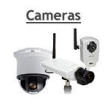
|
|
|
iCatcher Help
Learn how to set up and use iCatcher's features to their full potential. read more... File download areaDownload all the iCatcher software products, including legacy versions. read more... Wildlife picture galleryi-Catcher Wildlife captures fantastic scenes from nature. Have a look at some of the best. read more... Capture equipmentFind out about suitable equipment for use with iCatcher, from cameras to lighting, and more. read more... |
Tuning iCatcher Console iCatcher Console is internally a complex application that continually tunes itself to achieve the best balance between sensitivity and accuracy. After you have installed iCatcher and understand the general operation, you should spare some time to tune the application. There are two main reasons to tune your iCatcher Console installation, to reduce the number of false triggers and to increase system performance, these are discussed in more detail below. Tuning to minimize false triggersA concern in any event driven monitoring system, is possibility of false movements triggering the system. There are several ways to minimize the chances of false trigger these are summarized below; Apply masksUse masks to cover any areas likely to create false triggers. Examples of this might be roads, paths, swaying trees etc. Masks do not have to be visible on the image. See the masks section for more information. Adjust Sensitivity ControlsExperiment with different sensitivity settings and light condition settings to find the optimal match for your camera/subject. Set trigger on valuesThroughout iCatcher Console you are able to change the number of movements (in a specified time period) that constitute a trigger. These are set in the fashion "trigger on 3 movements in 8 seconds". If you are watching a corridor or path, then setting these to a higher number movements will eliminate spurious triggers from lights turning on and off, and other interference. Set a minimum trigger level if you have excessive triggers in low light conditionsiCatcher continually tunes the motion detection algorithm to ensure the best sensitivity in any given light conditions. With some cameras, with slower AGC circuits, this can cause constant false triggers if monitoring in very dark conditions. If you experience these symptoms then you can set a minimum trigger level for the relevant feed, in feed detection settings. Tuning to reduce CPU usageThe number of cameras that can be attached to any given iCatcher system is related to the overall power of the PC. This includes the speed of the hard disk used for storage as well as the amount of memory, speed of the processor and the graphics card. Set suitable update ratesAll iCatcher feeds wait for a period of time before requesting another image from the camera device. Setting a long period to wait will result in lower frame rates and lower CPU utilization, conversely higher frame rate can be achieved by reducing this wait period, at the expense of higher CPU utilization. Run in "only update on motion" modeiCatcher has a mode of operation that only updates the feed windows when motion has occurred, this is set on the recording tab of the feed settings. Running feeds in this mode substantially reduces CPU usage. Note that this does not apply to record direct to disk sources. System optimiser wizardiCatcher Console also has a system optimiser wizard which allows you to make a range of enhancements simply and easily. There is further information available on the System Optimiser help page. |
